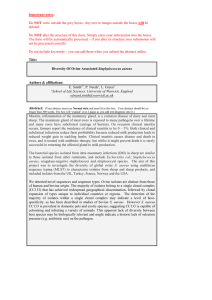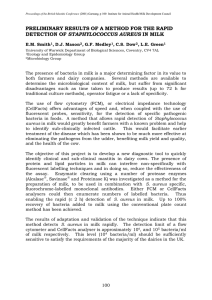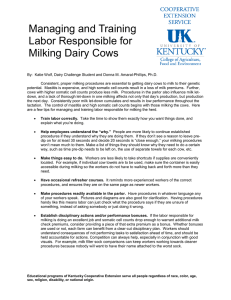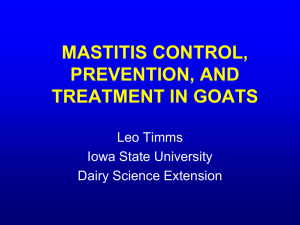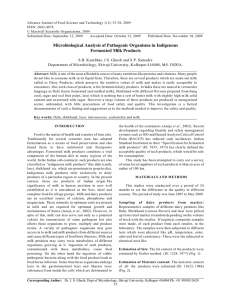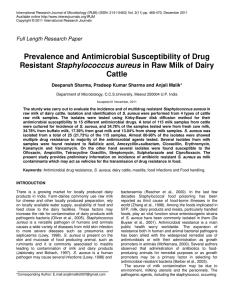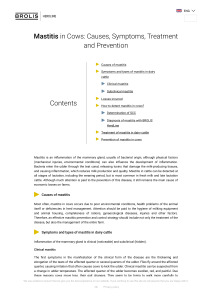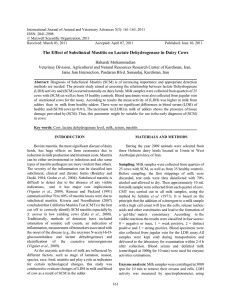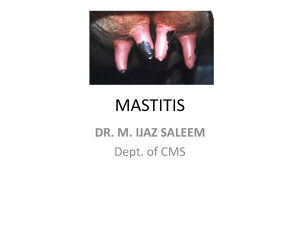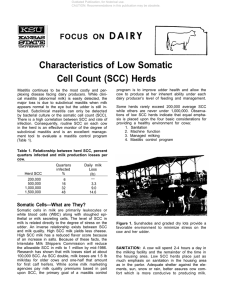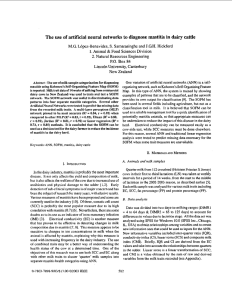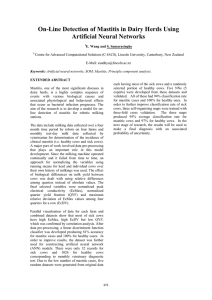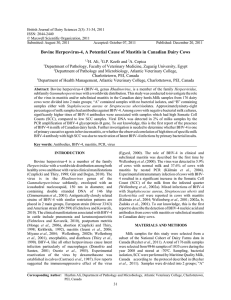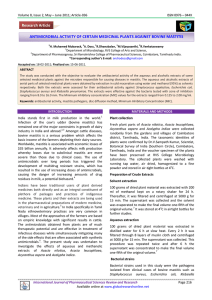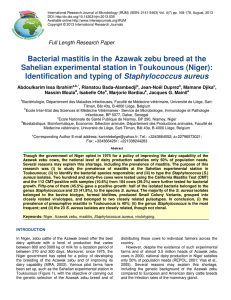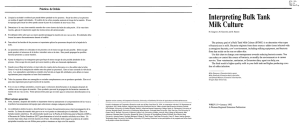Document 12584306
advertisement
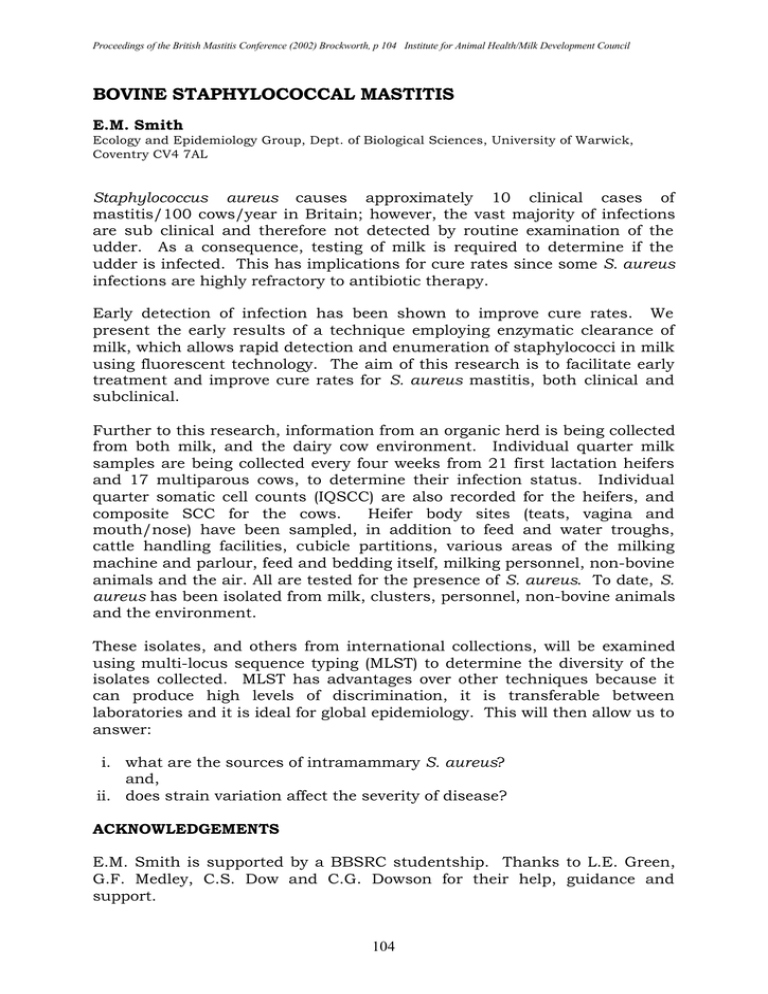
Proceedings of the British Mastitis Conference (2002) Brockworth, p 104 Institute for Animal Health/Milk Development Council BOVINE STAPHYLOCOCCAL MASTITIS E.M. Smith Ecology and Epidemiology Group, Dept. of Biological Sciences, University of Warwick, Coventry CV4 7AL Staphylococcus aureus causes approximately 10 clinical cases of mastitis/100 cows/year in Britain; however, the vast majority of infections are sub clinical and therefore not detected by routine examination of the udder. As a consequence, testing of milk is required to determine if the udder is infected. This has implications for cure rates since some S. aureus infections are highly refractory to antibiotic therapy. Early detection of infection has been shown to improve cure rates. We present the early results of a technique employing enzymatic clearance of milk, which allows rapid detection and enumeration of staphylococci in milk using fluorescent technology. The aim of this research is to facilitate early treatment and improve cure rates for S. aureus mastitis, both clinical and subclinical. Further to this research, information from an organic herd is being collected from both milk, and the dairy cow environment. Individual quarter milk samples are being collected every four weeks from 21 first lactation heifers and 17 multiparous cows, to determine their infection status. Individual quarter somatic cell counts (IQSCC) are also recorded for the heifers, and composite SCC for the cows. Heifer body sites (teats, vagina and mouth/nose) have been sampled, in addition to feed and water troughs, cattle handling facilities, cubicle partitions, various areas of the milking machine and parlour, feed and bedding itself, milking personnel, non-bovine animals and the air. All are tested for the presence of S. aureus. To date, S. aureus has been isolated from milk, clusters, personnel, non-bovine animals and the environment. These isolates, and others from international collections, will be examined using multi-locus sequence typing (MLST) to determine the diversity of the isolates collected. MLST has advantages over other techniques because it can produce high levels of discrimination, it is transferable between laboratories and it is ideal for global epidemiology. This will then allow us to answer: i. what are the sources of intramammary S. aureus? and, ii. does strain variation affect the severity of disease? ACKNOWLEDGEMENTS E.M. Smith is supported by a BBSRC studentship. Thanks to L.E. Green, G.F. Medley, C.S. Dow and C.G. Dowson for their help, guidance and support. 104

